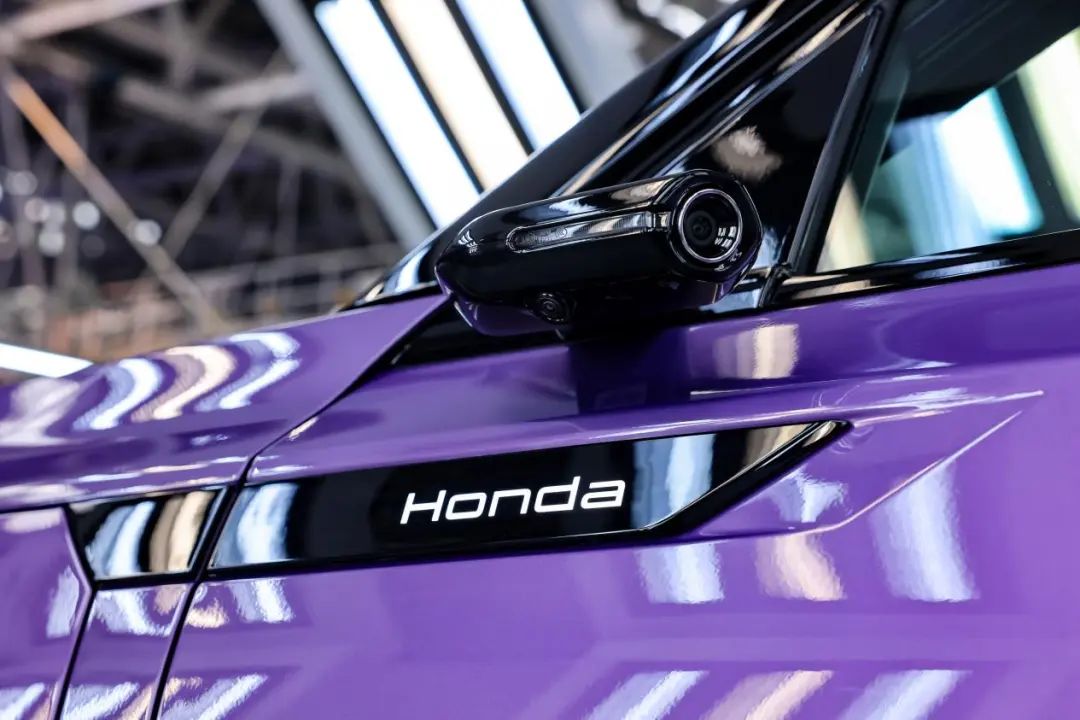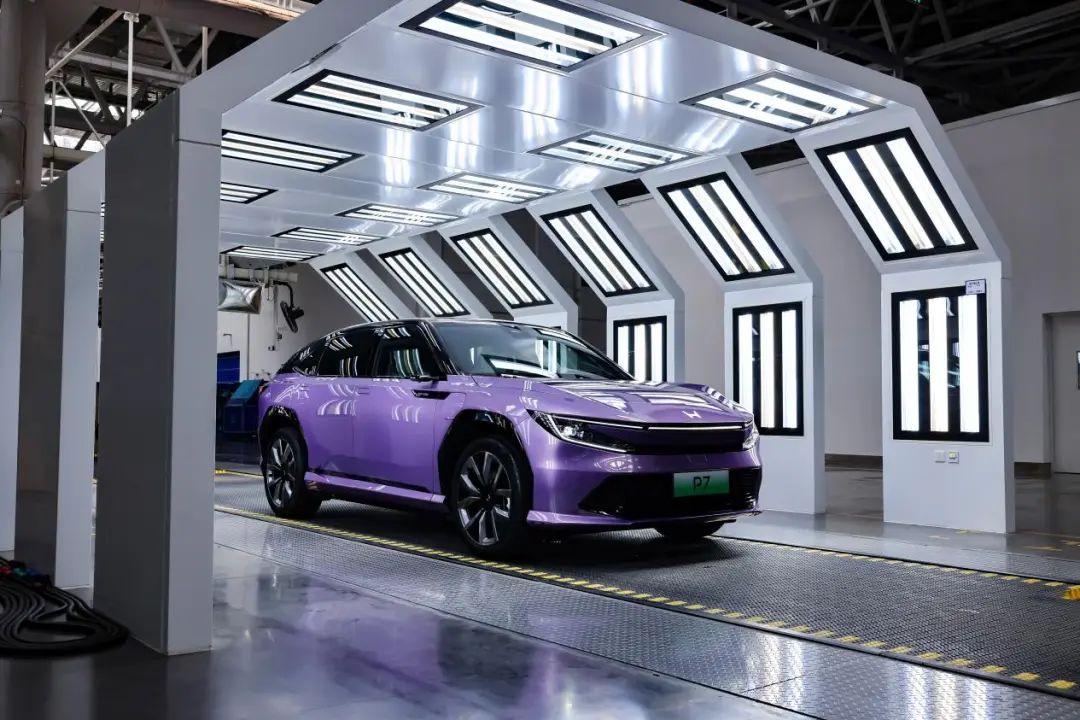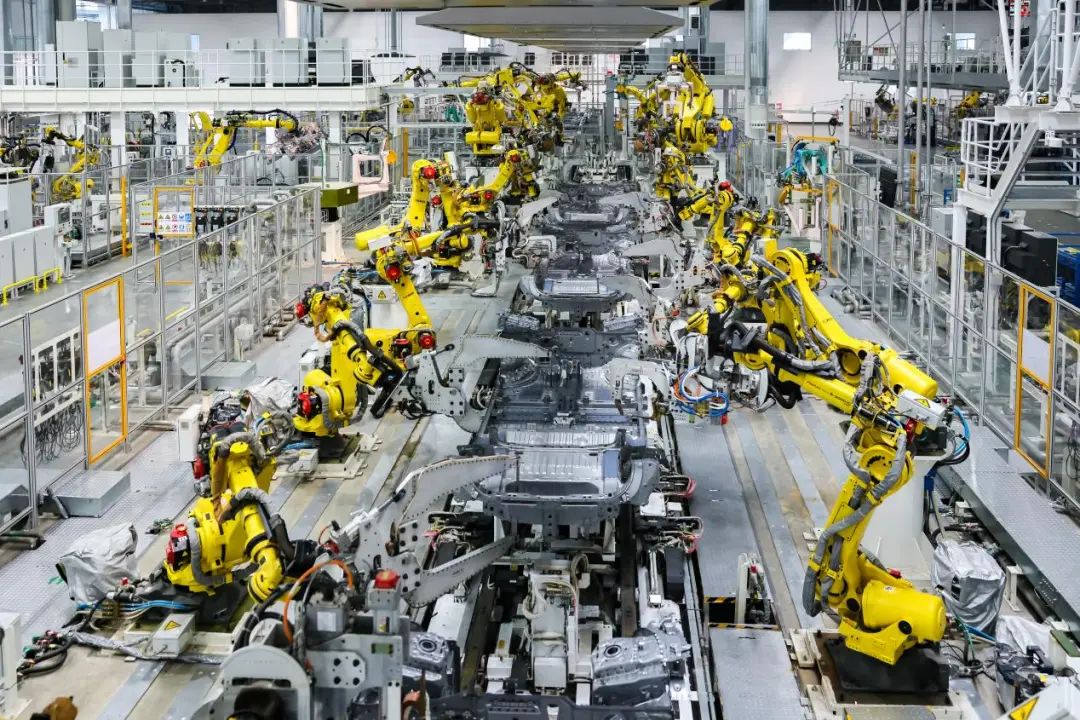Guangqi Honda Unveils P7: Are Japanese Cars Primed for a Turnaround?
![]() 04/03 2025
04/03 2025
![]() 471
471
On March 26, the same day the Accord rolled off the production line 26 years ago, Guangqi Honda introduced its first pure electric vehicle model, the P7 under the Ye brand, at its newly built new energy vehicle factory.
This is not a mere coincidence but a strategic move: Firstly, it marks Guangqi Honda's awakening and its comprehensive transition from fuel vehicles to smart electric vehicles; secondly, it symbolizes a shift from a classic era to a new era of innovation.
The significance of the Accord to Guangqi Honda in the past is mirrored in the expectations it holds for the Ye P7. Although Guangqi Honda has not explicitly stated this in official information, one can infer that the Ye P7 is its "technological awakening" masterpiece.

From Guangqi Honda's significant investment in a new energy vehicle factory to the technological prowess of the Ye P7, this representative joint venture automaker has fully adapted to the Chinese technological "competition."
This suggests that after a period of silence, Japanese cars have reached a pivotal point in regaining their market position.
In the broader context, the "King of Understanding" imposed tariffs on imported cars, accelerating the "window period" for cooperation between China, Japan, and South Korea. The external environment for Japanese cars' recovery has begun to improve. Historically, fluctuations in international relations directly reflect the popularity or decline of specific car categories in the Chinese market.
This is a fresh start.
01. The Moment of "Technological Awakening"
The decline of joint venture automakers in recent years has been attributed to their slow technology adoption, allowing independent brands to seize the initiative.
Objectively, due to slower cognitive updates among foreign management, joint ventures have lagged behind the market in adopting certain new technologies. However, this does not accurately reflect joint venture automakers' perception, as Chinese management's understanding of the Chinese market is on par with that of all independent brands.
Guangqi Honda's technological release is notable for its full-chain innovation through the fusion of global manufacturing and Chinese innovation. In essence, it respects China's technological achievements and achieves internal and external integration.
For instance, the Ye P7 utilizes a 90-degree high-energy-density ternary lithium battery custom-made by CATL and Honda to high standards, boasting an energy density higher than many first-tier independent brands, enabling a range of 650KM.

The power battery employs a heat pump air conditioning (Heat Pump AC) intelligent thermal management system, which can extend the driving range by 5% in low-temperature (-7°C) environments. Even in extremely cold conditions of -30°C, it maintains over 86.8% of its capacity.
Honda's internal and external combined development of the "three electrics" (battery, motor, and controller) represents a significant advancement.
Honda engineers are known for their near-obsessive pursuit of driving pleasure, which they have carried over to electric vehicles, aiming to redefine driving enjoyment in the electric era.
Therefore, they have developed a newly integrated three-in-one high-power motor with a maximum efficiency of 97.5% for the motor unit and 98.5% for the controller unit. On the P7, six distinct driving modes are designed through an adaptive electromagnetic suspension system, surpassing typical traditional fuel vehicles.
This is a distinct advantage inherited from traditional fuel vehicles: In the electric era, one can still derive fun from cars and even discover more ways to enjoy them.
In the past, joint venture vehicles lacked intelligence. However, with the P7, Guangqi Honda has completely transformed the market's perception.
Currently, automakers confident in intelligent driving have only achieved L2+ level onboard, with L3 still some time away. Guangqi Honda's Ye P7 comes equipped with L2+ level driving assistance right out of the gate, entering the mainstream.
In terms of sensors, the P7 stands out from traditional joint venture vehicles. It is equipped with one front camera, four multi-directional cameras for assisted intelligent parking, five millimeter-wave radars, and 12 ultrasonic radars.
Professional media's actual test data shows that the Ye P7 has a ramp passage success rate of 92%, surpassing the 87% of the Xiaopeng G6.
Functions commonly seen in short videos, such as automatically finding parking spots and driver emotion perception, are also available on the P7, and its intelligence is on par with new carmakers.
The smart cabin features a large TV and sofa and is equipped with an AI open large model platform for the first time, compatible with Alibaba's mainstream large model development framework, achieving 'best model second-level invocation.'
In terms of intelligence, Honda has also achieved integration with Chinese innovation, marking a considerable advancement for Honda engineers, renowned as 'tech geeks' in the traditional fuel era.
An insider who has driven the P7 remarked paradoxically: "Honda cars are still Honda cars, but Honda cars are no longer quite Honda cars."
How to interpret this statement? In terms of fundamental car-making principles like driving pleasure and quality, Honda still adheres to its signature style. However, in the application of new technologies, it is completely avant-garde. Bluntly put, Honda has made a breakthrough.
02. Reconstructing Game Rules
The Huangpu factory where the Ye P7 was born is itself a manufacturing revolution:
This factory boasts numerous digital innovations, sparking a covert digital battle in the industry. For example, it adopts Huawei's 'Optical Factory' solution, and the AI quality inspection system reduces the welding defect rate from 0.8% to 0.02%, which is 60% lower than Tesla's Berlin factory.
Another example is the stamping workshop, which employs a fully servo production line, producing one or a pair of stamped parts in as fast as 3.75 seconds, with robots automatically packing the parts post-production.

The Ye P7's supply chain also exhibits prominent features of the new energy era, not only including world-class traditional suppliers like Bosch and Panasonic but also incorporating top Chinese companies such as CATL and iFLYTEK.
These features underscore the determination of joint venture automakers, represented by Guangqi Honda, to reconstruct the game rules. In 2023, the penetration rate of new energy vehicles in China exceeded 40%, while Japanese brands' market share in China fell to a historic low of 14.4%. When everyone thought Japanese cars would 'fall behind,' Guangqi Honda decided to invest 3.5 billion yuan to build this factory.
Clearly, Guangqi Honda has already identified the favorable factors for a counterattack.
From a broader perspective, the indiscriminate trade war initiated by the "King of Understanding" has pushed East Asian countries towards closer trade mutual benefit. As Japanese brands in China, they should be particularly sensitive to situational changes.
Moreover, the current Chinese new energy vehicle market is returning to rationality. The three major pain points faced by new carmakers - exaggerated range, plummeting resale value, and maintenance pitfalls - are precisely the strengths of Japanese automakers.
Guangqi Honda's fuel vehicles have always been renowned for their resale value and unique quality management. Coupled with thousands of after-sales outlets accumulated over 20 years, established joint venture automakers possess the potential for latecomer advantages.
New carmakers previously played a wave of "chaotic punches to confuse the master." Now, it seems that Japanese automakers have recovered, frequently taking action and sounding the signal for a counterattack.







